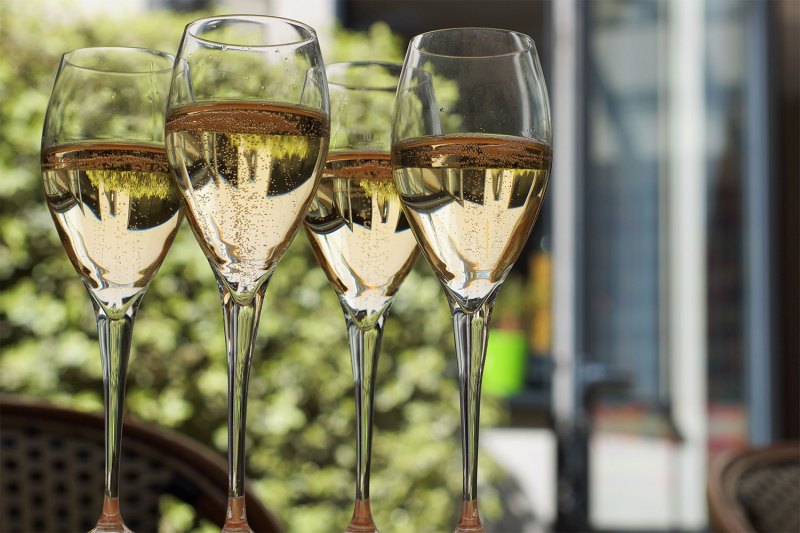
Climate change is throwing curveballs at any number of industries, especially agriculture. Things are growing in places they haven’t for a very, very long time thanks to an ever-rising mercury. Tropical fruits are being planted in central California, olives are finding a footing in Oregon, and wine grapes are creeping up into the foothills of mountain ranges all over, finding relief in cooler microclimates.
There’s a new sparkling wine player on the scene and, just a few years back, it seemed like a very unlikely one. Great Britain is growing traditional Champagne varieties like Pinot Noir, Chardonnay, and Pinot Meunier (the holy trinity of Champagne) and doing a pretty remarkable job thus far. The country we like to sync with umbrellas, Charles Dickens-like gloom, and an entire skyline of puffing chimneys may be the next great place for sparkling wine.
Meanwhile, in Champagne, like just about everywhere, things are warming. The grape harvest window is now earlier than before and hotter days make it trickier to preserve the acid and freshness that bubbly so fully depend on. It’s not dire — yet — but a lot of growers are trying to stay ahead of things by cutting their emissions, working on sustainable practices, and creating genetically modified varieties that can better withstand higher temperatures.
Great Britain is growing traditional Champagne varieties like Pinot Noir, Chardonnay, and Pinot Meunier (the holy trinity of Champagne) and doing a pretty remarkable job thus far.
It all makes the United Kingdom quite attractive in terms of viticulture, especially for the cool-climate grapes that go into traditional sparkling wines. And, spoiler alert, barring any significant and unlikely pauses in climate trends, we’ll likely be talking about English still wines in good time. It’s the next logical step for a cool but warming landscape with pockets of promising soils.
To get a taste of the developing sparkling wine scene in merry old England, look for the offerings below. And look for more to be available in the U.S. as importers and distributors pick up on their quality.
Nyetimber NV Classic Cuvee Brut

Nyetimber is one of the most lauded names to date, a southern English estate rooted in chalk and greensand soils. The vines were planted in 1988 and continue to produce exquisite fruit that’s carefully massaged into traditional sparkling wines. This non-vintage wine delivers more than its fairly modest price, with baked fruit and all the comforting flavors of your favorite bakeshop.
Gusbourne 2015 Brut Reserve

The label’s most popular wine benefits from three years of aging on the lees. It’s produced at Gusbourne’s headquarters in the southeast of England and treats you to the layered flavors and length you hope for in a good Champagne. Fans of the light toast and biscuit flavors that tend to come with certain sparkling wines will appreciate this number.
Wiston Estate NV Blanc de Blancs

Wiston operates out of West Sussex and turns out some quality effervescence in the glass. This wine is made entirely of Chardonnay and is ideal with a fresh plate of oysters. You get the tartness of orchard apples and a nice flinty quality that adds substance and minerality to this complex wine. The vintage versions tend to be even better, should you be able to find them.


